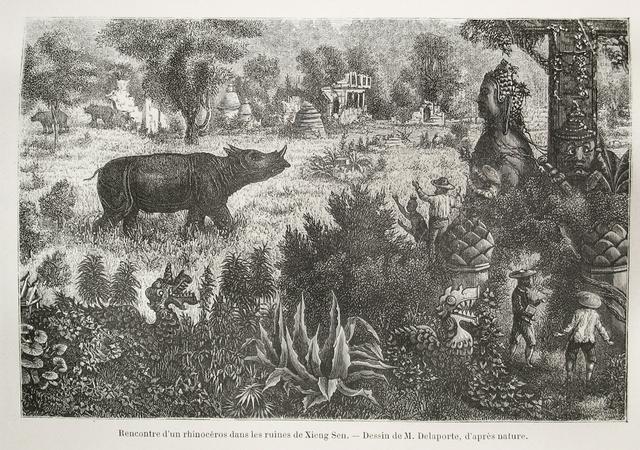 Chiang Saen (เชียงแสน) is a city in Chiang Rai Province, just south of the Golden Triangle.
Chiang Saen (เชียงแสน) is a city in Chiang Rai Province, just south of the Golden Triangle.
Once one of the major cities of the Lanna kingdom, it was originally called Wiang Hiran Nakhon Ngoen Yang and served as the capital before King Mengrai established Chiang Rai in 1262. The town was captured by the Burmese in the 16th century and sacked by King Rama I in 1803. Left a ghost town for a hundred years, it was repopulated around 1900, but still hasn't really staggered to its feet. Traces of old double city walls and many other antiquities still remain in and outside the town.
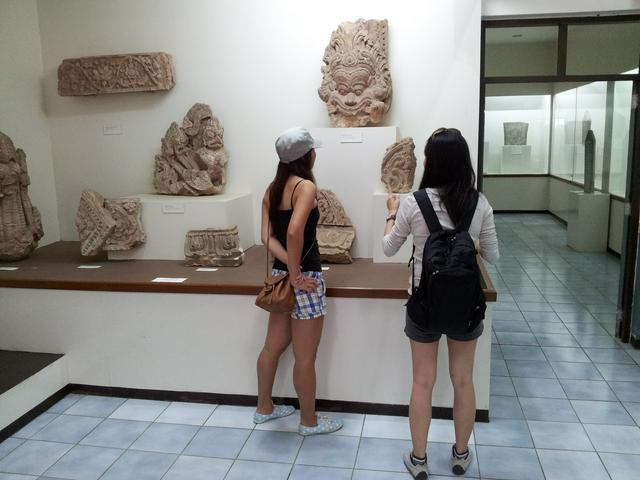 Like Chiang Mai, Chiang Saen has a city wall surrounding the historic town, with the fourth "wall" provided by the Mekong River.
Like Chiang Mai, Chiang Saen has a city wall surrounding the historic town, with the fourth "wall" provided by the Mekong River.
- Chiang Saen Lake. A large natural reservoir with scenic surroundings. Large flocks of waterfowl immigrate to the site during winter.
- Chiang Saen National Museum, +66 53 777102. W-Su, 09:00-16:00.. Archaeology, settlements and history of the town. There are replicas of the community and scores of ancient relics including Lanna-style sculptures, Buddha statues and inscription stones from Phayao and Chiang Saen itself. In addition, there are exhibitions of indigenous art objects of the Thai Yai (ไทยใหญ่), Thai Lu (ไทยลื้อ) and other hill tribes. These items include musical instruments, ornaments, opium-smoking accessories.
- Wat Pa Sak. Built by King Saen Phu in 1295 when three hundred teak trees were planted, hence the name Pa Sak (teak wood). It was then the residence of the patriarch. The temple's chedi is beautiful in Chiang Saen-style and the exteriors are elaborately decorated with designs. The chedi itself measures 12.5 m tall with a base of 8 m width, enshrined with the Lord Buddha's relics.
- Wat Phra Chao Lan Thong. Built by Prince Thong Ngua, a son of King Tilokkarat, the 12th ruler of Lanna, in 1489. A 1,200 kg Buddha statue was cast, 2 m wide and over 3 m high, named Phra Chao Lan Thong. Another Buddha statue called Phra Chao Thong Thip was also cast which is made of brass in Sukhothai-style.
- Wat Phra That Chedi Luang. Built by King Saen Phu, the 3rd ruler of the Lanna kingdom in the early 13th century. Ancient sites include the bell-shaped, Lanna-style principal chedi, measuring 88 m in height with a base of 24 m width, the largest structure in Chiang Saen. There are also remains of ancient viharn and chedi.
- Wat Phra That Pha Ngao. There is a bell-shaped chedi standing on large boulders. Nearby is a viharn where several old Chiang Saen-style Buddha statues are enshrined. There is also a viewpoint overlooking the Mekong and Chiang Saen. The temple attracts many Thai visitors. Part of the temple was found to be at least 700-1,300 years old. The temple has welcomed the royal family on many occasions over the last few decades.
There are also several ancient sites outside the city wall including Wat Phra That Pha Ngao (วัดพระธาตุผาเงา), a place for dharma practice. Wat Chedi Ched Tod (วัดเจดีย์เจ็ดยอด) is a peaceful place, 1 km beyond Wat Phra That Pha Ngao. Wat Phra That Chom Kitti (วัดพระธาตุจอมกิตติ), about 1.7 km from town, and Wat Sangkha Kaeo Don Han (วัดสังฆาแก้วดอนหัน) where sketches on brick slabs tell stories about the life of the Lord Buddha.
Chiang Saen Lake. A large natural reservoir with scenic surroundings. Large flocks of waterfowl immigrate to the site during winter.
Chiang Saen National Museum, +66 53 777102. W-Su, 09:00-16:00.. Archaeology, settlements and history of the town. There are replicas of the community and scores of ancient relics including Lanna-style sculptures, Buddha statues and inscription stones from Phayao and Chiang Saen itself. In addition, there are exhibitions of indigenous art objects of the Thai Yai (ไทยใหญ่), Thai Lu (ไทยลื้อ) and other hill tribes. These items include musical instruments, ornaments, opium-smoking accessories.
Wat Pa Sak. Built by King Saen Phu in 1295 when three hundred teak trees were planted, hence the name Pa Sak (teak wood). It was then the residence of the patriarch. The temple's chedi is beautiful in Chiang Saen-style and the exteriors are elaborately decorated with designs. The chedi itself measures 12.5 m tall with a base of 8 m width, enshrined with the Lord Buddha's relics.
Wat Phra Chao Lan Thong. Built by Prince Thong Ngua, a son of King Tilokkarat, the 12th ruler of Lanna, in 1489. A 1,200 kg Buddha statue was cast, 2 m wide and over 3 m high, named Phra Chao Lan Thong. Another Buddha statue called Phra Chao Thong Thip was also cast which is made of brass in Sukhothai-style.
Wat Phra That Chedi Luang. Built by King Saen Phu, the 3rd ruler of the Lanna kingdom in the early 13th century. Ancient sites include the bell-shaped, Lanna-style principal chedi, measuring 88 m in height with a base of 24 m width, the largest structure in Chiang Saen. There are also remains of ancient viharn and chedi.
Wat Phra That Pha Ngao. There is a bell-shaped chedi standing on large boulders. Nearby is a viharn where several old Chiang Saen-style Buddha statues are enshrined. There is also a viewpoint overlooking the Mekong and Chiang Saen. The temple attracts many Thai visitors. Part of the temple was found to be at least 700-1,300 years old. The temple has welcomed the royal family on many occasions over the last few decades.
- Songkran Festival and Boat Races. Held 13-18 Apr every year. In this festival, there is a parade featuring the water bathing ceremony of the Phrachao Lanthong Buddha image. There are also boat races and folk performances.
- Loi Krathong Festival The festival day usually falls in the month of November depending on the Thai lunar calendar.
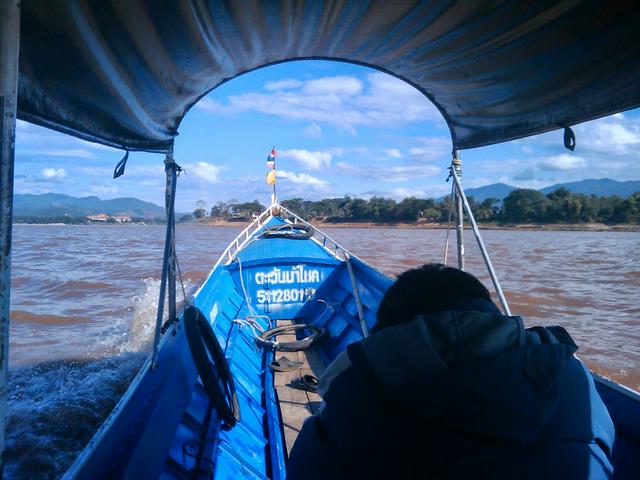
Songkran Festival and Boat Races. Held 13-18 Apr every year. In this festival, there is a parade featuring the water bathing ceremony of the Phrachao Lanthong Buddha image. There are also boat races and folk performances.
Loi Krathong Festival The festival day usually falls in the month of November depending on the Thai lunar calendar.
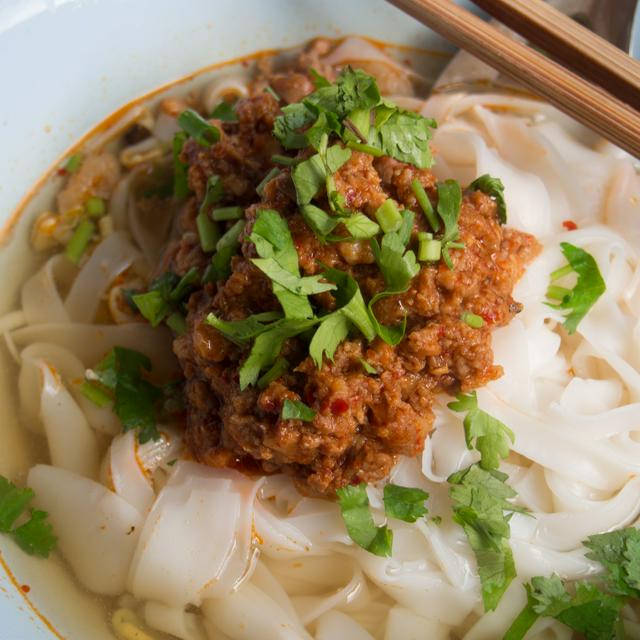
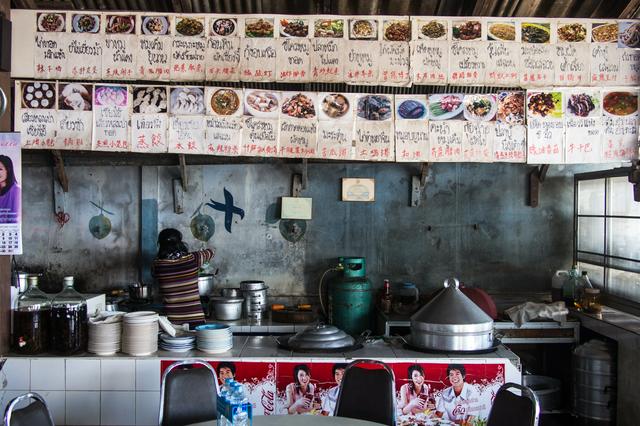 In the evening, many local food stalls set up shop along the bank of the Mekong north of the T-junction. The tables set are small, and you sit on a mat on the ground as locals do. Menu in English and Thai. Try the bamboo chicken and/or bamboo fish (cooked inside bamboo on charcoal fires).
In the evening, many local food stalls set up shop along the bank of the Mekong north of the T-junction. The tables set are small, and you sit on a mat on the ground as locals do. Menu in English and Thai. Try the bamboo chicken and/or bamboo fish (cooked inside bamboo on charcoal fires).
If you walk north beyond the night market, to where the road turns away from the river, there are several eateries sharing a covered terrace above the river. Parking is available. These provide a cafe/basic restaurant setting. The food available at all these outlets is excellent value with a similar but not identical set of standard dishes to choose from at each outlet. The quality is more than adequate, more basic good value rather than exquisite, but the dishes are well-prepared, cooked to order, and taste authentic. The service is pleasant and the beer is cold. The cooks take pride in their work
There is a small restaurant opposite the new banking establishments halfway down the main drag (on your left as you face the river). The food is perfectly adequate and one will not be disappointed. The value is good and the beer is cold. The service is good and the owners are trying hard.
- Chiang Khong, for the border crossing to Laos
- Chiang Rai, the largest city in these parts
- Golden Triangle, the point where Thailand, Myanmar, and Laos meet
- Mae Sai, Thailand's northernmost city
- Ferry along the Mekong between the borders of Laos and Myanmar (no visas required for these two countries) to Jinghong, China
